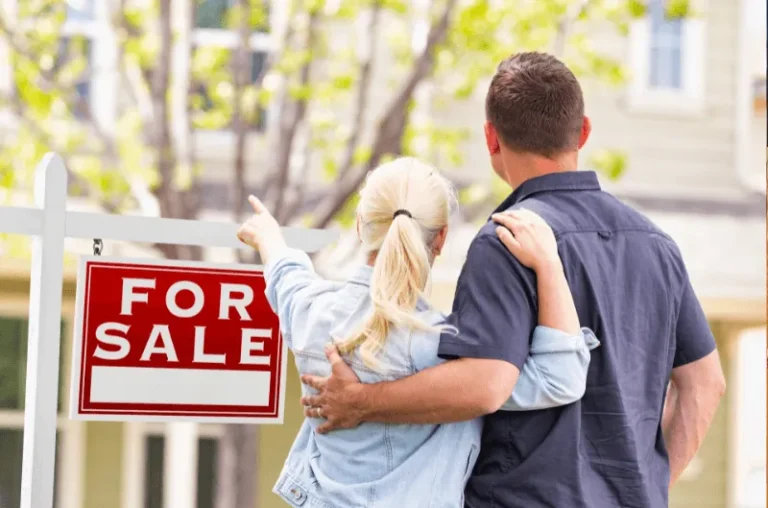I’ve been thinking about second homes a lot lately. Not just because they’re a hot topic in the real estate world, but because my sister just bought the cutest little cabin in Vermont and I’m straight-up jealous.
Buying a second home isn’t like picking up a new pair of shoes though. It’s a big deal with lots of moving parts.
Maybe you’re dreaming about a beachfront getaway where you can hear waves crashing from your bedroom window. Or perhaps you’re eyeing a mountain cabin where you can escape city noise.
Whatever your vision, you need a game plan before signing on any dotted lines.
I learned this the hard way when my friend Jake rushed into buying a lakeside cottage without checking flood zones. Two years and one flooded basement later, he wished he’d done more homework.
So grab a coffee and let’s walk through how to make a smart second home investment without future regrets.
Step-by-Step Guide to Make a Wise Choice for Second Home
I’m breaking this down into ten easy-to-follow steps. Nothing fancy, just practical advice I wish someone had given me when I was house-hunting.
These steps cover everything from figuring out why you want a second home to keeping it in good shape after you buy it.
Each step builds on the last one, so try not to skip ahead even if you’re super excited about picking a location.
Step 1: Define Your Purpose
First things first – why do you want a second home?
I know that sounds obvious, but trust me, your answer changes everything.
Are you looking for a quiet weekend retreat where you can recharge from your busy work life?
Maybe you want a vacation spot for family gatherings where the grandkids can run wild.
Or perhaps you’re thinking about rental income to boost your retirement savings.
Your purpose shapes every decision that follows.
My neighbor Sarah bought a beach house thinking she’d rent it out most of the year. Then she fell in love with the community and wanted to use it more herself.
Suddenly her income projections went out the window because she didn’t want strangers in her space.
Be honest with yourself about how you’ll really use the property.
Write down your top three reasons for wanting a second home and keep them handy during your search.
Once you’ve established your goals, your next move should be connecting with a trusted local realtor. Local expertise can save you time, money, and stress.
Maui Real Estate, for instance, can help you find a property that fits your budget and supports your personal and financial goals. Visit mauirealestate.com to see some properties and get in touch with an agent.
Step 2: Set a Realistic Budget
Let’s talk money. Not just the purchase price, but the whole shebang.
Second homes come with extra costs that can sneak up on you faster than my cat when I open a can of tuna.
Beyond the mortgage, there’s property taxes (often higher for second homes), insurance (also higher), utilities, maintenance, and possibly HOA fees.
Don’t forget about furnishing the place unless you plan to sleep on the floor and eat standing up.
My rule of thumb? Whatever budget you think you need, add 20% more.
When we bought our cabin in the mountains, we totally forgot about snow removal costs. That first winter was a rude awakening to the tune of $2,500 we hadn’t planned for.
Look at your monthly income and expenses honestly. How much can you really afford without stressing about money?
Remember that a second home should bring joy, not financial anxiety.
Step 3: Choose the Right Location
Location isn’t just about pretty views. It’s about practicality too.
How far are you willing to drive or fly regularly? A place that’s five hours away might sound doable until you’ve made that trip ten times in rainy weather.
Research the area in all seasons. That charming beach town might be a ghost town in winter.
Talk to locals about what it’s really like to live there year-round.
Check out the amenities that matter to you. Need good restaurants nearby? Medical facilities? Kid-friendly activities?
Don’t just rely on real estate listings. Spend time in the area yourself.
My cousin bought a beautiful lake house only to discover the neighboring property hosted loud parties every weekend during summer. Not exactly the peaceful retreat she had imagined.
Drive around at different times of day to get a feel for traffic, noise levels, and the general vibe.
Trust your gut feeling about a place. If something feels off, it probably is.
Step 4: Understand the Financing Options
Financing a second home works differently than your primary residence.
Banks usually want bigger down payments – often 20% or more. Interest rates tend to be higher too.
Shop around for loans specifically designed for second homes or investment properties.
Some options to consider include conventional loans, home equity loans from your primary residence, or even retirement account loans if you qualify.
If you plan to rent the property, some lenders will count potential rental income toward your qualification, but they’ll want proof it’s rentable.
My friend Tom got a great deal using a portfolio loan from a local bank that specialized in vacation properties in his target area.
Don’t just go with your regular bank out of convenience. The right financing can save you thousands over the life of your loan.
Ask about prepayment penalties and other loan terms that might limit your flexibility down the road.
Step 5: Research Legal and Tax Obligations
Taxes and legalities aren’t sexy topics, but ignoring them can lead to expensive headaches.
Second homes have different tax implications than primary residences. You might get some mortgage interest deductions, but there are limits.
If you plan to rent out the property, you’ll need to report that income and learn which expenses you can deduct.
Some areas have restrictions on short-term rentals like Airbnb. Check local regulations before counting on that income.
Property taxes can vary wildly even within the same county. Get the exact tax history for any property you’re considering.
Insurance requirements might include flood, hurricane, or other specialized coverage depending on the location.
I learned about vacation rental permits the hard way when the city fined me $500 for not having one. Ouch.
Consider talking with both a tax professional and a real estate attorney who knows the local market. Money well spent.
Step 6: Evaluate Property Management Needs
Unless you live nearby or plan to visit very frequently, property management deserves serious thought.
Who will check on the place during storms? Fix leaky faucets? Handle rental guests?
Professional property managers typically charge 20-30% of rental income. Is that worth it to you?
Self-managing saves money but costs time and energy. Be realistic about your availability and skills.
Technology like smart locks and security cameras can help, but they can’t replace human eyes and hands.
My sister tried self-managing her beach condo from three states away. After two flooded units and one nightmare guest, she happily pays a manager now.
If you go with a management company, check reviews and talk to their current clients before signing anything.
Even with management, you’ll need a local network of plumbers, electricians, and handypeople for emergencies.
Step 7: Visit and Inspect the Property
Never buy a second home sight unseen. Ever. No matter how good those listing photos look.
Walk the property multiple times. Bring someone with you who can spot issues you might miss.
Hire a professional inspector who knows local issues like termites in Florida or radon in New England.
Test water quality if it’s on a well system. Check cell service and internet options if you need to stay connected.
Look beyond the property itself to neighboring lots. Any red flags like unkempt properties or commercial zoning nearby?
Check for environmental concerns like flood zones, fire risk areas, or erosion issues.
I once walked away from a “perfect” lakefront cottage after discovering the water level had been dropping for years due to drought. The dock would soon be sitting on dry land.
Take your time with this step. A thorough inspection now prevents nasty surprises later.
Step 8: Make a Smart Purchase Decision
When it’s time to make an offer, let your head lead, not just your heart.
Research comparable sales in the area to ensure you’re not overpaying.
Consider the property’s resale potential even if you plan to keep it forever. Life changes.
Negotiate repairs based on inspection findings rather than reducing your offer price.
Include contingencies that protect you if financing falls through or major issues are discovered.
Don’t get emotionally attached to any property before it’s yours. There’s always another good option out there.
My best purchases happened when I was willing to walk away from the negotiating table.
Remember that a second home is both a lifestyle choice and a financial decision. Balance both aspects.
Step 9: Plan for Use and Income
Once you’ve bought your second home, have a clear plan for how you’ll use it.
If you’re renting it out, decide whether you want long-term tenants or short-term vacation rentals.
Block off your personal use dates well in advance and stick to them.
Create systems for cleaning, maintenance, and guest turnover if applicable.
Consider joining local rental programs or marketing platforms to maximize visibility.
Set aside a portion of income for repairs, replacements, and upgrades. Things wear out faster in rental properties.
My beach condo does best when I reinvest about 10% of rental income back into small upgrades each year.
Be prepared for seasonal fluctuations in both income and expenses.
Step 10: Monitor, Maintain, and Reassess
A second home is an ongoing commitment, not a one-time purchase.
Visit regularly to check conditions and make minor repairs before they become major problems.
Keep track of market trends in your area. Is property value increasing? Are rental rates changing?
Reassess your goals periodically. Does this property still meet your needs?
Don’t be afraid to make changes if your situation or the market shifts.
Sometimes the smart move is upgrading to a better property. Other times it’s selling and investing elsewhere.
I review my second home strategy every January. Sometimes I make no changes, but the annual check-in keeps me proactive.
Your needs and goals will evolve over time. Let your property decisions evolve too.
Conclusion
Buying a second home might seem overwhelming at first. So many details, so many decisions.
But taking it step by step makes the process manageable and even fun.
I’ve seen friends make second home purchases that transformed their lives for the better. Weekend retreats that became retirement dreams. Vacation homes that paid for themselves through rentals.
I’ve also seen hasty decisions lead to financial strain and family stress. Not exactly what anyone wants from a second home.
The difference usually comes down to thoughtful planning versus emotional impulse.
Follow these steps, take your time, and keep your original goals in mind throughout the process.
Your perfect second home is out there waiting. Not just any property, but the right one for your unique situation.
Now who’s ready to start browsing listings? Just remember – step by step!



